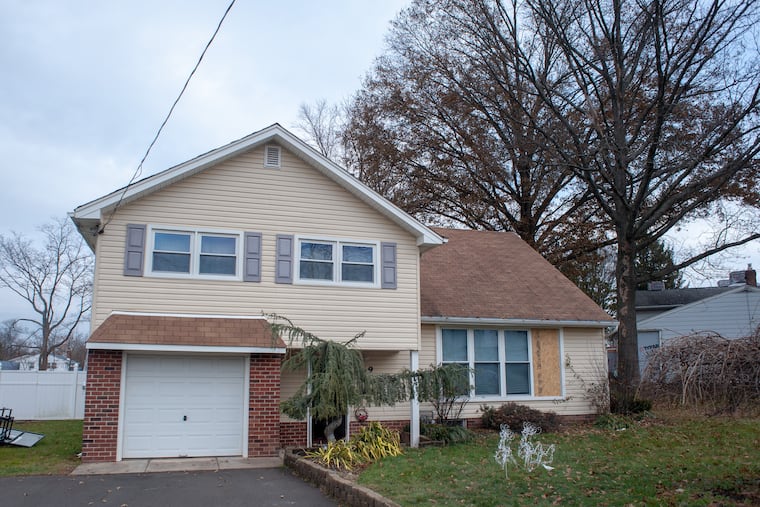Warminster home hid ‘heroin mill’ that operated for months, prosecutors say
The house, on a quiet block, operated in plain sight as 11 people toiled in its basement as part of a drug operation.

For months, prosecutors say, 11 men and women toiled in secrecy, packaging and processing powerful narcotics using vacuum sealer bags and coffee grinders, hiding away from the world behind obscured windows and doors on a quiet, unassuming street in suburban Bucks County.
As the group headed to court on drug charges Tuesday, the details of the “heroin mill” authorities say they ran in Warminster were finally brought to light. Investigators say the group made a staggering $8 million-a-week profit on the operation.
During a marathon, nearly three-hour preliminary hearing in Doylestown, those charged for their alleged roles in the scheme faced detectives and prosecutors, who led District Judge Daniel J. Finello Jr. on a virtual tour of the assembly-line operation in the home’s basement.
“This house had been adapted to do one thing and one thing only: Prepare and package heroin for distribution on the streets of Bucks County,” said Assistant District Attorney Megan Stricker, the lead prosecutor. “A heroin mill of this scale doesn’t just pop up overnight.”
Moises Rodriguez, 42, and Dariel Vasquez, 38, the alleged ringleaders of the enterprise, were spotted several times by Warminster detectives leaving the home with bulging trash bags believed to have been filed with heroin and fentanyl, investigators said.
The two were arrested Dec. 11 during a dramatic SWAT raid along with Nuris Martinez, Yocasta Maria-Mercedes, Eleni Saturrie, Carlos Garcia-Perez, Roberto Espinal, Jose Luis-Morales, Luis Torres, Delvin Perez, and Luigi Ortega.
All 11 defendants face drug manufacturing and conspiracy charges, as well as two counts of operating a corrupt organization, added by Stricker during Tuesday’s proceedings.
At the time of the arrests, District Attorney Matthew Weintraub estimated that the group was sitting on 200 pounds of the narcotic, and making millions in profit on its sale. However, detectives Tuesday testified that his were preliminary estimates — the amount recovered at the home was closer to 4 kilograms, or about 9 pounds.
The racketeering charges, arguably the most serious the defendants face, were the subject of vehement arguments by the eight defense attorneys seated across from Stricker.
“We don’t know what was coming into or out of the house. We don’t know what they were delivering or what they had," said Guy R. Sciolla II, the lawyer for Vasquez and Ortega. “The fact that there’s a handful of people organized under a so-called mill doesn’t make it a corrupt organization.”
The other attorneys, including Laurence Narcisi III, who represents Rodriguez and Garcia-Perez, argued that the prosecutors had failed to prove that some of the defendants had ties to the drug lab, other than their presence during the raid.
“You’re allowed to know people who are doing illegal things without being considered culpable,” Narcisi said. “The defendants complied with law enforcement officers, who did not give the court evidence that they knew what was going on in that house."
It was a more difficult argument to make for Vasquez, Rodriguez, and Espinal. Warminster Township Police Detective Sean Harold testified that medicine bottles bearing their names were found in the home.
Additionally, Harold said he routinely saw five of the defendants regularly enter the home during his two months of surveillance in the neighborhood. He said the local probe into the property began with a tip from another officer, but did not elaborate. After the hearing, Stricker declined to provide additional information, citing the ongoing case.
In those two months, Vasquez and Rodriguez would carry the trash bags, sometimes loading them into an SUV that Rodriguez would cram into the home’s tiny garage, he said.
The three women arrested were spotted carting groceries and cases of water into the home, apparently to sustain the workforce in the basement, according to Harold. They also decorated the home for Christmas in an attempt to blend in with their surroundings, he said.
When Harold toured the house in the aftermath of the raid, he said, he saw the fruits of the group’s labor.
Thousands of baggies of packaged heroin and fentanyl were found secreted throughout the home, with a major concentration of them in the basement, he said. There, investigators also found a series of “workstations" that covered every stage in the process from cutting the narcotics with fillers, to bagging them up for sale.
The room’s ventilation was altered so it would not disrupt the drug packaging, he said, and handwritten signs were posted on the walls explicitly forbidding the use of cell phones while “working.”
Upstairs in the bedrooms, he said, inflatable mattresses had been crammed together, alongside piles of clothes in which bundles of cash were hidden.